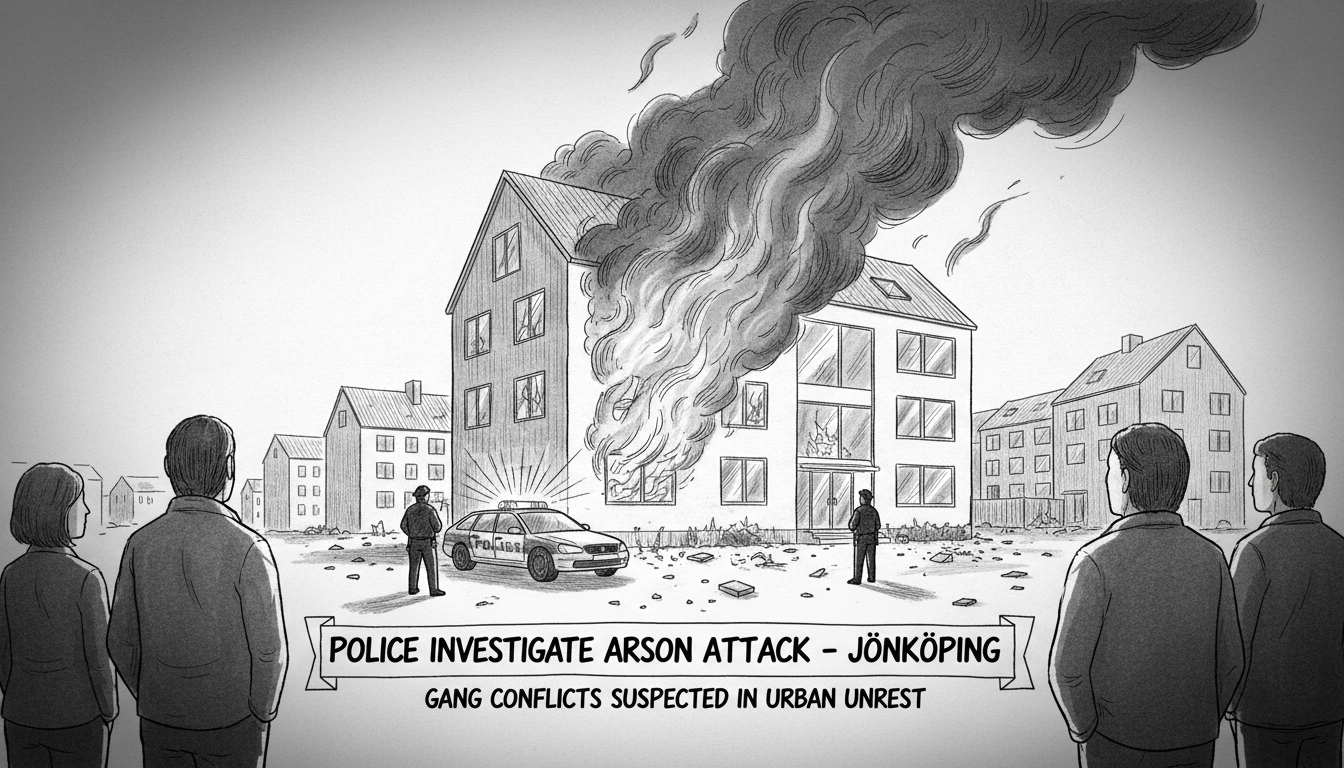A dramatic fire with explosive characteristics shook a residential building in Liljeholmen, Jönköping late Friday evening. The blaze required substantial emergency response efforts after someone intentionally set fire to an exterior door leading to a stairwell.
Authorities are currently investigating the incident as aggravated arson. Police have made significant progress in their investigation but acknowledge extensive analysis remains necessary.
Erik Lindblad, acting assistant local police area chief in Jönköping, expressed confidence in the ongoing investigation. He stated officials have high hopes for resolving the case successfully.
The timing of this attack raises particular concerns. On the same day as the arson, a mobile surveillance camera was installed just meters from the building entrance. The perpetrator's apparent disregard for being recorded doesn't surprise police officials.
Lindblad suggested this likely connects to gang conflicts rather than targeting the general public. He emphasized residents shouldn't feel alarmed while acknowledging these incidents can occur anywhere. The location often relates to where certain individuals are officially registered.
Police express concern about potential escalation in such conflicts. They're working extensively to stay ahead of developing situations and prevent further violence.
This incident reflects broader challenges in Swedish society regarding urban safety and organized crime. Many residential areas across Sweden have seen increased security measures in recent years. The brazen nature of this attack, despite visible surveillance, indicates changing dynamics in criminal behavior.
International readers might find context in Sweden's approach to community policing. Swedish authorities typically maintain close relationships with neighborhood associations and local organizations. This collaborative model faces new tests as criminal tactics evolve.
The Liljeholmen area represents typical Swedish suburban planning with mixed housing and community facilities. Such neighborhoods traditionally maintain low crime rates, making this incident particularly disruptive to community trust.
Police resources in medium-sized cities like Jönköping face increasing demands. Balancing routine public safety with complex gang investigations requires careful prioritization. The visible police presence following such incidents often provides temporary reassurance but long-term solutions remain challenging.
Swedish immigration patterns have contributed to diverse urban populations in cities nationwide. Integration challenges sometimes manifest in youth vulnerability to criminal networks. Community leaders consistently work on prevention programs alongside law enforcement efforts.
Local residents typically express strong support for increased surveillance and police visibility. Yet permanent solutions require addressing root causes through education, employment opportunities, and social inclusion initiatives.
This arson attack represents more than isolated criminal activity. It highlights ongoing societal negotiations about safety, privacy, and community cohesion in modern Sweden. The police response will likely influence public confidence in urban security measures across similar Swedish communities.

